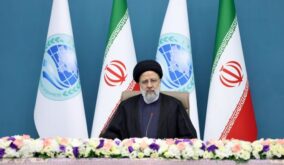PayvandNews – On June 30, the 43rd session of the World Heritage Committee kicked off in Baku, Azerbaijan, to assess 36 nominees, including Iran’s Hyrcanian Forest, for possible inscription on the World Heritage list.

Representatives of about 180 countries are attending the event, which will be running through July 10. And of the nominees 28 belong to the cultural sites, six are natural and two are mixed [nature and cultural] properties, Mehr reported.
The attendees range from high-level officials from UNESCO member states, including prime ministers, deputy prime ministers, culture, environment, and tourism ministers, to heads of international organizations, UNESCO advisory bodies, and permanent representatives to about 70 UNESCO countries and specialists in architecture, heritage and environment.
Hyrcanian Forest (also known as Caspian Forest), extends from the south of Azerbaijan to about 900 km to the east to the Iranian northern provinces of Gilan, Mazandaran and Golestan. This forest forms the outermost boundary of the west-Eurasian nemoral deciduous forests to alpine thorn cushion corridors and forest-free dry vegetation of the Iranian highlands and Central Asia.
The Hyrcanian Forest cover the northern slope of the Alborz Mountain in Iran at the southern edge of the Caspian Sea and it contains very rich ecosystems due to the particular orographic and climatic situation (precipitation rich, warm-temperate, high moisture from the Caspian Sea and damming effect of the Alborz Mountain range).
According to UNESO, the Hyrcanian Forest contain the most important and significant natural habitats for in-situ conservation of biological diversity, including those containing threatened species of outstanding universal value from the point of view of science or conservation. It also contains superlative natural phenomena or areas of exceptional natural beauty and aesthetic importance. It is outstanding examples in the record of significant on-going geological processes in the development of landforms and significant geomorphic or physiographic features. It is also outstanding example representing significant ongoing ecological and biological processes in the evolution and development of terrestrial, ecosystems and communities of plants.
… Payvand News – 07/03/19 … —
 Shabtabnews In this dark night, I have lost my way – Arise from a corner, oh you the star of guidance.
Shabtabnews In this dark night, I have lost my way – Arise from a corner, oh you the star of guidance.



